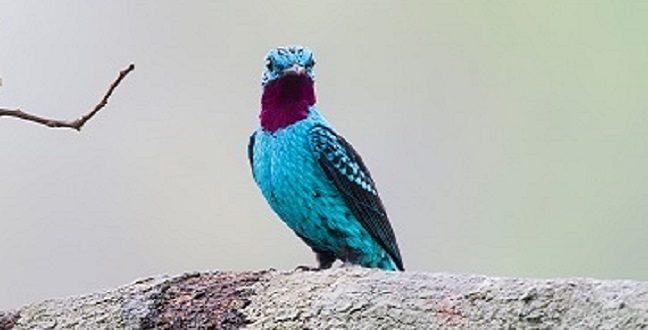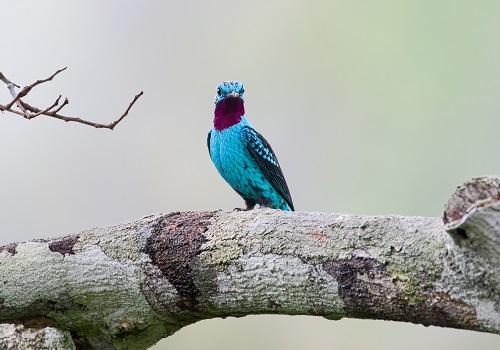Applied Mathematics and Computational Sciences | Applied Physics | Electrical Engineering
Color-changing coatings ready for the big time
Wafer-thin, scratch-proof films can generate a rainbow of colors using random metallic nanostructures.


The nanoporous feathers of the plum-throated cotinga bird inspired the KAUST team’s approach.
© David Tipling Photo Library, Alamy stock photo C8XDBA.
The dazzling colors of peacock feathers arise from the physical interaction of light with biological nanostructures. Researchers have discovered how to exploit this natural trickery known as structural coloration into a large-scale printing technology that produces lightweight and ultraresistant coatings in any color desirable1.
Researchers routinely produce photonic structures to influence the behavior of light for applications such as fiber-optic communications. Many groups have used photonic technology to generate new forms of artificial structural colors that take advantage of the entire spectrum of visible light.
Moving this technology out of the lab is challenging, however, because photonic nanostructures are often fragile and difficult to produce in practical quantities.
Associate Professor Andrea Fratalocchi from the University’s Electrical Engineering program and colleagues from Harvard University and ETH Zurich used wet chemical techniques to help overcome the difficulties of scaling-up photonic colors. Inspired by the nanoporous feathers of the plum-throated cotinga bird, the team’s approach began by sputtering a platinum–aluminum based alloy on to a target surface. Then, a process called dealloying dissolves most of the aluminum and causes the remaining metal to reorganize into a bumpy network featuring open nanopores.
Next, the researchers deposited an ultrathin layer of protective sapphire on to the metal network to both protect the surface and modify the way in which light interacts with the photonic nanopores. Surprisingly, slight changes of the sapphire thickness from 7 to 53 nanometers yielded remarkable color changes—the initially transparent film underwent stepwise transitions to yellow, orange, red and blue tones.
“Controlling these colors is experimentally very simple and uses coating technologies that are cheap and easily implemented,” said Fratalocchi. “However, understanding how the complex light-matter interactions generate colors took months of work.”
The team’s high-level simulations determined that color generation begins when light strikes the metal and generates wave-like entities known as surface plasmons. As the plasmons interact with the randomly distributed pores, they become trapped and modulations in the coating’s refractive index produced epsilon-near-zero regions in the nano pores, where waves propagate extremely slowly. Adding the sapphire film caused additional reflections of the trapped waves, which created a flow of saturated color through resonance effects.
Fratalocchi noted that the way colors are formed in this structure can open the way for programmable nanomaterials for many applications.
“Imagine a scratch on a car that can be repainted with an extremely thin material without other expensive procedures or as a lightweight, maintenance-free way to coat airplanes,” he stated. “This technology could be really revolutionary.”
References
- Galinksi, H., Favraud, G., Dong, H., Gongora, J. S. T., … Fratalocchi, A. & Capasso, F. Scalable, ultra-resistant structural colors based on network metamaterials. Light: Science & Applications advance online publication (2017).| article
You might also like

Applied Physics
A single additive enables long-life, high-voltage sodium batteries

Bioengineering
Smart patch detects allergies before symptoms strike

Computer Science
Green quantum computing takes to the skies

Applied Mathematics and Computational Sciences
Realistic scenario planning for solar power

Applied Physics
Two-dimensional altermagnets could power waste heat recovery

Applied Physics
Interface engineering unlocks efficient, stable solar cells

Applied Physics
The right salt supercharges battery lifespan

Applied Physics



